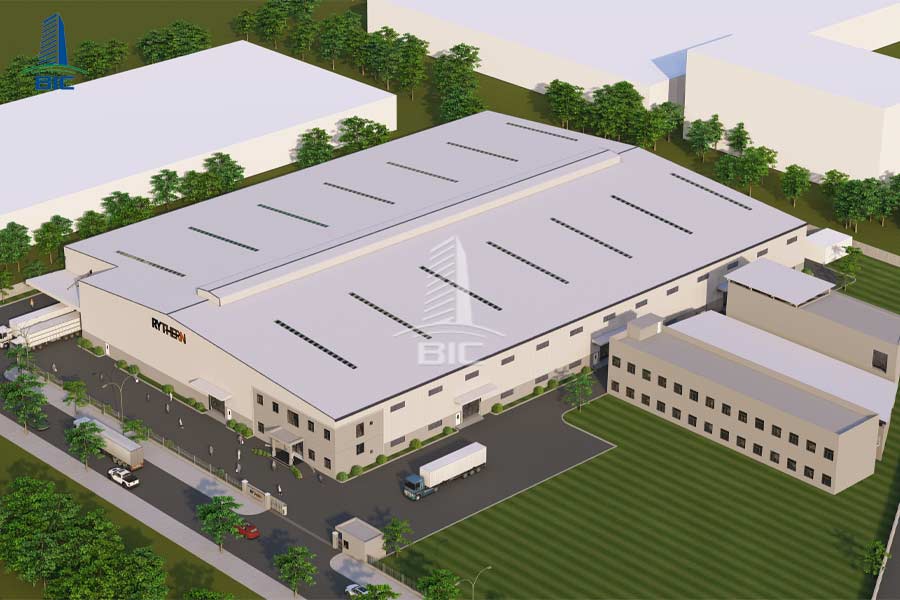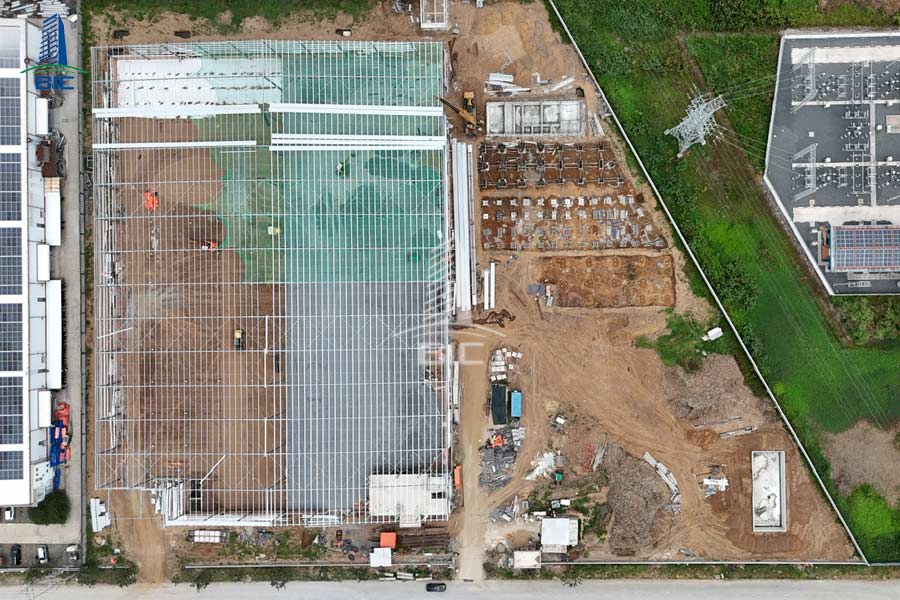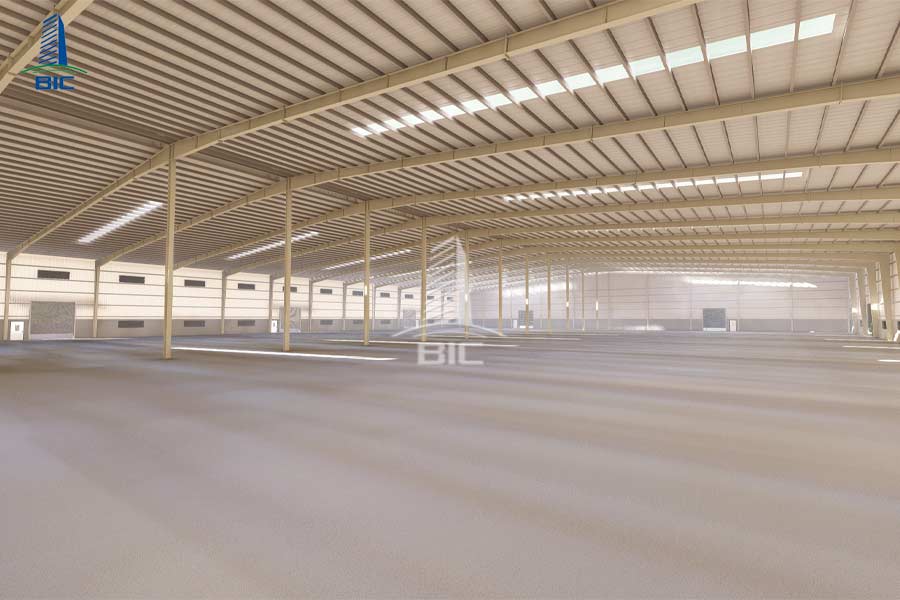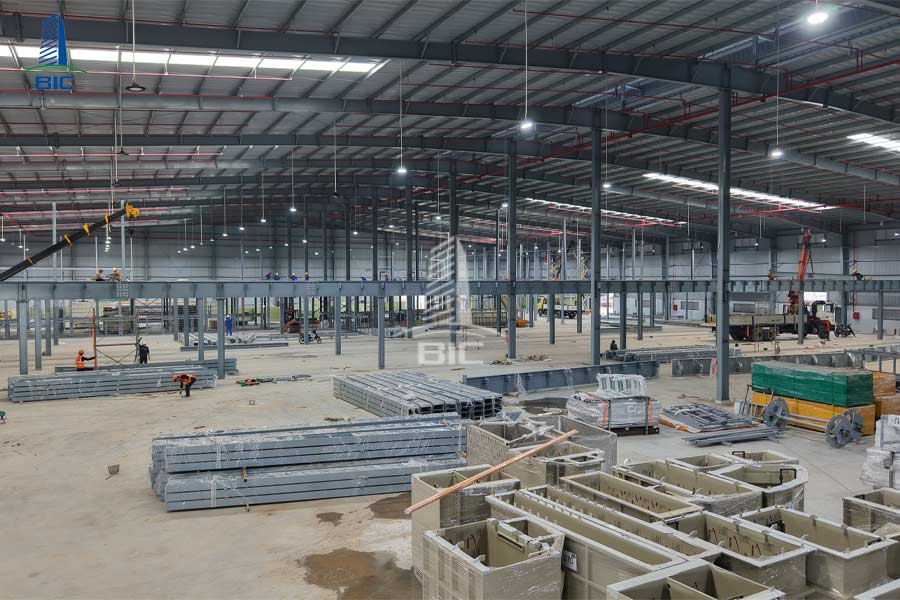
Compliance with legal regulations in factory design is a prerequisite for enterprises to lawfully carry out their projects. It forms the foundation for developing a safe, lawful, and sustainable facility. By ensuring that the legal procedures are correctly followed from the outset, businesses can avoid unnecessary complications, shorten implementation time, and minimize potential risks during construction and operation. This article provides an update on the latest legal requirements for factory design in Vietnam, helping investors understand the necessary legal steps and prepare adequately before starting a project.
Factory design is not simply about constructing a roofed structure equipped with machinery. It’s a complex integration of construction engineering, functional planning, and more importantly a strict legal process that demands thorough understanding and compliance from the very beginning.
Neglecting or overlooking legal regulations can place businesses in difficult situations:
- The construction might be suspended or demolished, resulting in major losses in time, cost, and reputation.
- Non-compliant documentation may be denied construction permits and fire protection approval, making it impossible to break ground.
- Lacking legal documentation may prevent companies from obtaining critical production certifications such as ISO, GMP, etc., hindering entry into global supply chains.
- Projects may be rejected for funding or lose credibility with investors and financial institutions due to unclear legal status.
Grasping legal regulations from the design stage serves as a “golden key” that ensures smooth operation, legal compliance, and long-term expansion opportunities.

Factory design in Vietnam must adhere to an established legal framework, including laws, decrees, technical regulations, and national standards. The following are essential documents currently applicable to industrial projects:
|
Legal Document |
Relevance to Factory Design |
|
Construction Law 2014, amended 2020 |
Specifies procedures for construction permits, conditions for commencement, design requirements, and project management. |
|
Urban Planning Law and Planning Law (2017) |
Requires the factory location to align with land-use planning and regional/functional area planning. |
|
Decree 15/2021/NĐ-CP |
Provides detailed guidance on managing construction investment projects, including design appraisal and responsibilities of related parties. |
|
Decree 06/2021/NĐ-CP |
Covers quality management, inspection, acceptance, and maintenance throughout the project lifecycle. |
|
QCVN 06:2022/BXD |
National technical regulation on fire safety, mandatory for factories with fire/explosion risks. |
|
QCVN 01:2021/BXD |
Technical regulation on construction planning: defines building density, setbacks, height, floor area ratio, etc., within industrial zones. |
|
Fire Protection Law & Decree 136/2020/NĐ-CP |
Regulates fire safety design appraisal and acceptance for industrial projects with fire hazards. |
|
Vietnam Standards (TCVN) |
Include technical specifications for structural, architectural, M&E, drainage, wastewater treatment, lighting, ventilation, etc. |
Staying updated and applying these legal documents correctly is crucial for valid designs, legal compliance, and approval of construction and operation.

To obtain legal approval and proceed with construction, factory design documentation must fulfill the following requirements:
- The proposed factory site must be located in an industrial zone or a legally approved area for industrial development.
- The design must comply with 1/500 detailed planning or functional zone planning approved by competent authorities.
Non-compliance can render the design legally invalid and may lead to suspension, penalties, or forced demolition.
According to Decree 15/2021/NĐ-CP, medium- to large-scale industrial projects must follow a three-step design documentation process:
- Preliminary Design (Cơ sở): Used to apply for construction permits, specifying project scale, function, and key design solutions.
- Technical Design: Detailed implementation of structural, architectural, electrical, water, and fire safety systems, complying with technical standards.
- Construction Drawing Design: Provides full, detailed drawings for construction, acceptance, and completion.
Missing any of these three steps disqualifies the design from legal approval.
Some projects require independent appraisal or approval before construction permits are issued:
- Level II+ projects, those with basements, or special fire safety concerns must be appraised by a qualified independent agency.
- Fire protection systems must be separately appraised by the Fire Prevention & Fighting Police in accordance with Decree 136/2020/NĐ-CP.
- Environmental design: Projects requiring Environmental Impact Assessment (EIA) must attach the approved EIA report or environmental protection plan.

Factory designs must conform to national technical regulations and standards, including:
- Fire Safety: Comply with regulations on fire-resistant materials, emergency exits, safe distances, ventilation, and lightning protection as per QCVN 06:2022/BXD.
- Wastewater Treatment: Must meet output standards under QCVN 40:2011/BTNMT before discharge into the environment.
- Planning Requirements: Follow QCVN 01:2021/BXD and specific criteria of each industrial zone regarding density, height, FAR, and boundary lines.
Meeting these legal requirements not only legalizes the project but also facilitates smooth permitting, construction, and long-term operation.
Once design documentation is completed and legally compliant, investors must carry out the following legal steps before starting design construction:
Step 1: Apply for a Construction Permit
Include the preliminary design, land use documents, planning approval, and relevant materials.
Step 2: Submit Fire Protection Design for Approval
Required for factories with fire risks. Submit documents to the local Fire Police Department.
Step 3: Submit Environmental Impact Assessment (EIA) or Environmental Protection Plan
Depending on project scale and industry, obtain approval from competent environmental authorities.
Step 4: Apply for Infrastructure Connection Approval
Covers medium-voltage electricity, clean and process water, drainage processed via the industrial park management or infrastructure provider.
Step 5: Register Construction Commencement
Once the permit is issued, submit commencement documents to the Department of Construction or Industrial Zone Authority for formal project initiation.
Step 6: Register Investment Project (For FDI or Expansion Projects)
Submit to the Industrial Zone Authority or the Department of Planning and Investment.
Proper and synchronized implementation of these legal procedures not only ensures compliance but also lays a smooth groundwork for construction and future operation, minimizing legal risks and disputes.

In 2025, several critical updates to construction regulations for industrial projects have taken effect. Investors and designers should pay close attention to the following:
- QCVN 06:2022/BXD is now fully enforced, with key changes in fire safety. It mandates fire compartmentalization, functional area separation, and forced smoke extraction systems for high-risk zones.
- Local Requirements: Provinces like HCMC, Binh Duong,
and Long An now require large-scale factories (≥2,000 m²) to include solar roofing systems in the design, promoting sustainability and carbon reduction goals.
- Building Information Modeling (BIM): Pilot applications are underway in major industrial parks. As guided by the Ministry of Construction, large-scale, public-funded, or technically complex projects are encouraged to use BIM from the design phase to optimize management, detect design conflicts, and reduce construction costs.
Timely updates on these new regulations ensure that design documents are compliant and demonstrate the enterprise’s professionalism and technical competence from the outset.
Complying with the latest legal regulations in factory design not only legalizes the construction process but also lays the foundation for safe operations, long-term efficiency, and future scalability. Investors should work with design firms that are legally qualified and knowledgeable in industrial procedures and technical standards.
Contact BIC – a trusted factory design consultant offering comprehensive support from planning, legal compliance to turnkey design and construction to ensure your project is lawful, on schedule, and cost-effective.